+Search query
-Structure paper
| Title | Structure of the Arabidopsis thaliana glutamate receptor-like channel GLR3.4. |
|---|---|
| Journal, issue, pages | Mol Cell, Vol. 81, Issue 15, Page 3216-33226.e8, Year 2021 |
| Publish date | Aug 5, 2021 |
 Authors Authors | Marriah N Green / Shanti Pal Gangwar / Erwan Michard / Alexander A Simon / Maria Teresa Portes / Juan Barbosa-Caro / Michael M Wudick / Michael A Lizzio / Oleg Klykov / Maria V Yelshanskaya / José A Feijó / Alexander I Sobolevsky /    |
| PubMed Abstract | Glutamate receptor-like channels (GLRs) play vital roles in various physiological processes in plants, such as wound response, stomatal aperture control, seed germination, root development, innate ...Glutamate receptor-like channels (GLRs) play vital roles in various physiological processes in plants, such as wound response, stomatal aperture control, seed germination, root development, innate immune response, pollen tube growth, and morphogenesis. Despite the importance of GLRs, knowledge about their molecular organization is limited. Here we use X-ray crystallography and single-particle cryo-EM to solve structures of the Arabidopsis thaliana GLR3.4. Our structures reveal the tetrameric assembly of GLR3.4 subunits into a three-layer domain architecture, reminiscent of animal ionotropic glutamate receptors (iGluRs). However, the non-swapped arrangement between layers of GLR3.4 domains, binding of glutathione through S-glutathionylation of cysteine C205 inside the amino-terminal domain clamshell, unique symmetry, inter-domain interfaces, and ligand specificity distinguish GLR3.4 from representatives of the iGluR family and suggest distinct features of the GLR gating mechanism. Our work elaborates on the principles of GLR architecture and symmetry and provides a molecular template for deciphering GLR-dependent signaling mechanisms in plants. |
 External links External links |  Mol Cell / Mol Cell /  PubMed:34161757 / PubMed:34161757 /  PubMed Central PubMed Central |
| Methods | EM (single particle) / X-ray diffraction |
| Resolution | 1.5 - 4.39 Å |
| Structure data | EMDB-23606, PDB-7lzh: EMDB-23607, PDB-7lzi:  PDB-7lz0: 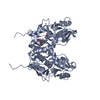 PDB-7lz1:  PDB-7lz2: |
| Chemicals | 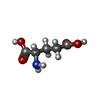 ChemComp-GLU:  ChemComp-CL:  ChemComp-SO4:  ChemComp-GOL:  ChemComp-HOH:  ChemComp-SER: 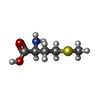 ChemComp-MET:  ChemComp-NA: 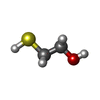 ChemComp-BME:  ChemComp-NAG: 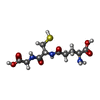 ChemComp-GSH: |
| Source |
|
 Keywords Keywords |  MEMBRANE PROTEIN / MEMBRANE PROTEIN /  Arabidopsis thaliana / Arabidopsis thaliana /  Ion-Channel / glutamate receptor-like channel (GLR) / Ion-Channel / glutamate receptor-like channel (GLR) /  Ligand binding domain / Ligand binding domain /  TRANSPORT PROTEIN TRANSPORT PROTEIN |
 Movie
Movie Controller
Controller Structure viewers
Structure viewers About Yorodumi Papers
About Yorodumi Papers








